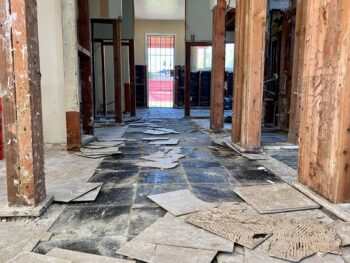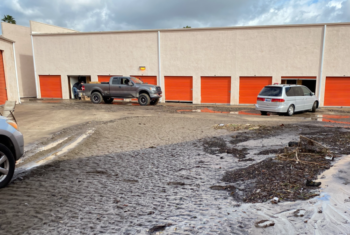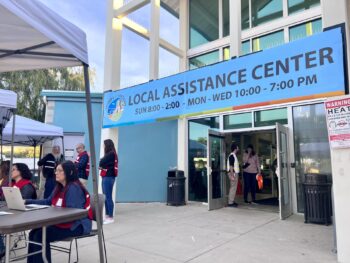It is not expected to be particularly rainy or dry this winter season, meteorologists told San Diego County first responders. When neither El Niño or La Niña weather patterns are in effect, it’s called a neutral pattern. In August, an El Niño weather pattern started developing and that would have meant a wet season, but those conditions have faded. Conversely, a La Niña pattern means a dry winter.
“We end up annually having about average or slightly below average precipitation from October through April in Southern California,” Alex Tardy, National Weather Service warning coordination meteorologist, said of a neutral pattern. “Now, that said, we can still get, and we have gotten in these type of conditions, one or two large storms that deliver a lot of precipitation.”
Tardy quickly points to December 2010, January 1993 and March 1991 when neutral conditions were in effect and yet San Diego County had high rainfall and flooding.
San Diego County emergency managers, firefighters, lifeguards deputies and flood control specialists all listened intently during the winter weather seasonal outlook workshop held Tuesday at the County’s Emergency Operations Center in Kearny Mesa.
“We use the National Weather Service data for our day-to-day planning here at the Office of Emergency Services,” said Stephen Rea, assistant director. “The Weather Service helps keep us informed, helps us in our planning and is one of our most valued liaisons.”
Battalion Chief Chris Webber with the San Diego Fire-Rescue Department said the seasonal outlook helps his department predict fire weather. The workshop also presents new and emerging technology and information sources for the region, he said.
John Sandmeyer, a member of the San Diego Lifeguard Swift Water Rescue Team, said the seasonal outlook is important because in a major storm they will likely have to deploy into the field.
“As far as big storms, we work with the fire department and respond to help. We also pre-stage units in the Tijuana River, Mission Valley, and Sorrento Valley. It helps us pre-stage our assets,” Sandmeyer said.
Rand Allan, flood warning manager for the County Flood Control division of Public Works said, “I usually work very closely with the Weather Service but I like to come to these (workshops) to learn about new developments.”
Some of the new information Allan took away from Tuesday’s workshop was from a presentation by the US Army Corps of Engineers on levee management and recovery assistance, SDG&E’s extensive weather stations, and a Wireless Emergency Alerts system by the local National Weather Service office, which sends out a 90-character weather alert to equipped mobile phones.
San Diego County residents are also encouraged to monitor weather in their communities, as winds, snow and rainfall can vary widely across the county, said Tardy. Residents can prepare for extreme conditions by having extra food and water and emergency supplies. If the community they live in is prone to flooding, residents should also have sandbags on hand. To learn more about emergency preparedness, visit www.readysandiego.org.






